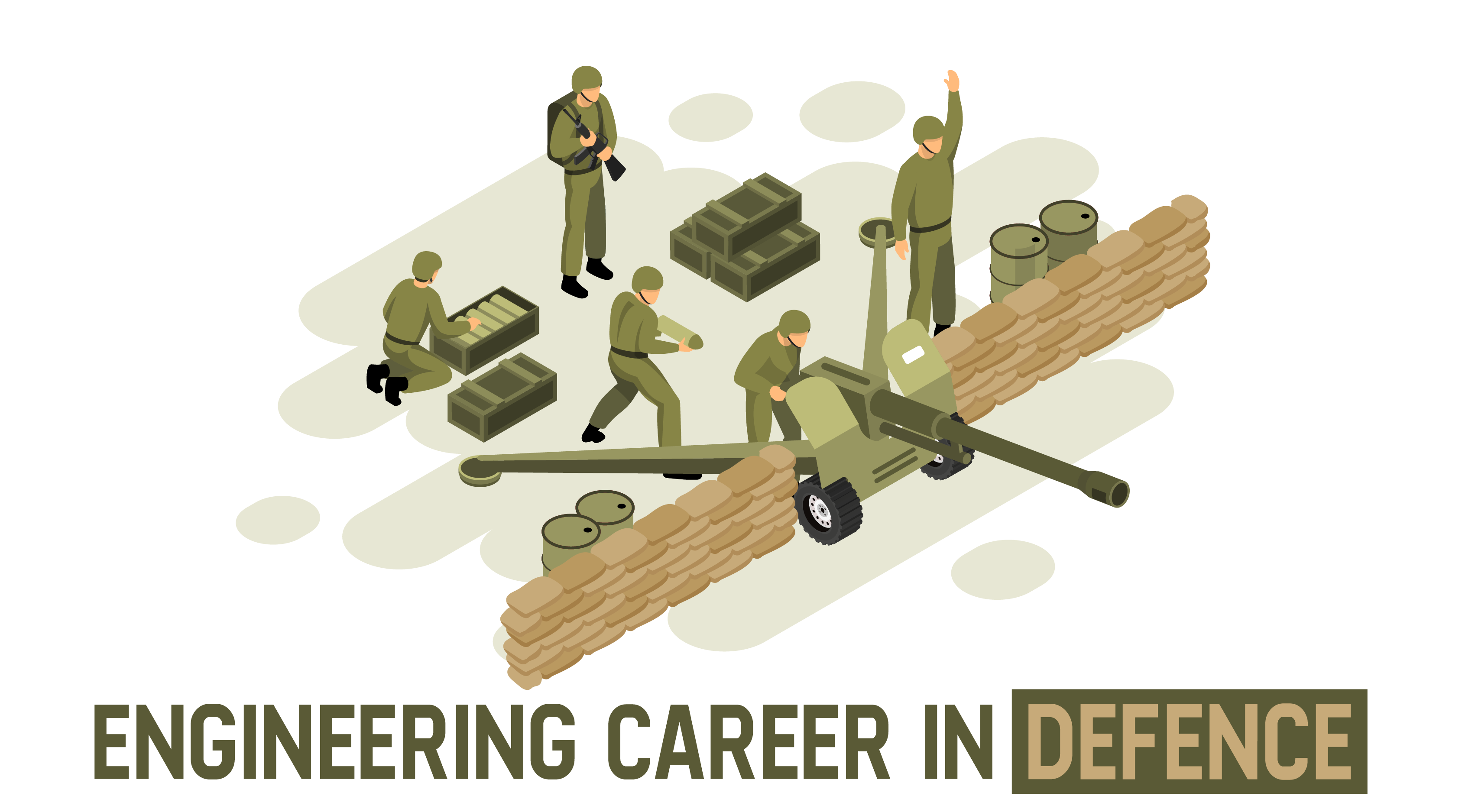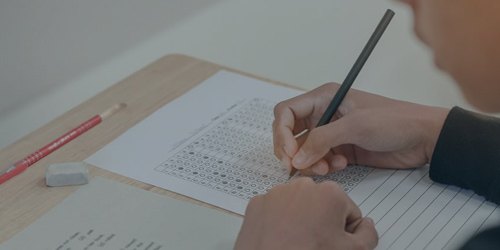The candidates in defence are extensively trained in combat, usage of different kinds of weaponry, and are equipped to handle the security of anything, from a club to the whole country. It all starts when recruits undergo a training course that trains their bodies as well as their minds to face any challenge, combat any threat, and overcome any pressure. As a part of the Indian defence services, someone can serve in the Army, Air Force, or Navy on combat duty, on administrative assignments, in the medical services, engineering services, or in the Education Corps. In the defence services, in defence, the nature of responsibilities varies with the diverse range of activities. The recruitment to the Armed Forces is voluntary and every citizen of India, irrespective of their caste, religion, and community, is eligible for recruitment into the Armed Forces, provided they meet the laid down physical, medical, and educational criteria.

Know more: NDA: A bright and respectable career option.
A career in defence forces entails a huge number of opportunities for those who want to lead adventurous lives. For those who have a strong sense of duty towards the nation, there can be no better option than joining in the Defence as a career.
- There are a lot of career opportunities in defence apart from joining the Army, Navy, or Air force. For instance, one can become a Para commando or a National Security Guard (NSG) commando.
- If a recruit succeeds in passing the training course and graduates from the National Defence Academy, the soldier is commissioned as an officer in any branch of the Indian armed forces. If it was a technical course that the candidate completed at NDA then they will operate war machinery in aircraft, ships, tanks, or submarines.
- In the case of non-technical courses, the graduate soldiers begin their career as an army officer as they are appointed at the post of the first lieutenant in the army or navy and in the case of the air force, as the flying lieutenant.
Rank growth:
Depending on their skills and abilities, someone can grow in the ranks and become Chief of Staff of Indian armed forces, the highest post for a soldier in the country, seconded only by the President, who is the official commander in chief of all Indian armed forces.
Mentioned below are the different ranks:
- Indian Army: Lieutenant, Captain, Major, Lieutenant Colonel, Colonel, Brigadier, Major General, Lieutenant General, General, and Field Marshal.
- Indian Navy: Sub-lieutenant, lieutenant, lieutenant Commander, Commander, Captain, Commodore, Rear Admiral, Vice Admiral, Admiral and Admiral of the Fleet.
- India Air Force: Flying Officer, Flight Lieutenant, squadron leader, Wing Commander, Group Captain, Air Commodore, Air Vice-Marshal, Air Marshal, Air Chief Marshal and Marshal of the Air Force.
A Career in Defence after Engineering:
| Category | Type of Entry | Age | Qualification | Selection Mode |
|---|---|---|---|---|
| Indian Army | University Entry Scheme | 18 – 25 years | Engineering Degree Course | Campus Interview and SSB Interview |
| Technical Graduate Course18 – 25 years | 20 – 27 years | |||
| SSC (Technical) | 20 – 27 years | |||
| SSC (Women Tech-Nontechnical) | 19 – 25 years | Graduates/ Postgraduates/ LLB/ Engineering |
SSB Interview |
|
| Indian Air Force | PC/ SSC for men and SSC for women | 18 – 28 years | Electronics/ Mechanical Engineering Graduates | All India EKT and SSB Interview |
| University Entry Scheme | Engineering Graduates | |||
| Indian Navy | University Entry Scheme | 19- 24 years | B. Tech in Naval Architecture / Mechanical/Civil/ Aeronautical / Metallurgical /Aerospace Engineering with 60% marks. | SSB Interview |
| SSC | ||||
| SSC (Submarine) | ||||
| SNAES (Special Naval Architect Entry Scheme) | 21 – 25 years |
How to get into Defence?
The Union Public Service Commission recruits the commissioned Army officers through NDA (National Defense Academy) examinations, organized all over India. Other than that, there are the Combined Defense Service Examination (CDSE) and Short Service Commission Examination (SSCE) through which you can be a part of the Army.
- A student after 10+2 examination can opt for an engineering career in the Army or Navy through Technical Graduate Course, which enables him to become an engineer at Army expense before getting commissioned as an officer. No UPSC examination is required for this entry.
- Besides this, the entry through National Defence Academy after a UPSC written exam is still quite popular. NDA provides world-class training facilities which include graduation in the science/humanities stream that gives someone remarkable opportunities to develop one’s personality and cultivate new interests. Basically, the candidate can choose from over thirty different extra-curricular activities like aero-modelling, golf, gliding, sailing, windsurfing astronomy, and many more.
- A graduate can join through the Combined Defence Services examination as a regular (PC)/short service commissioned officer.
- Indian Military Academy, Dehradun conducts the training for the regular commissioned officers, known as the cradle of Military leadership. Those aspirants who are joining the Short Service Commission get trained at Officer’s Training Academy at Chennai and serve for a period of five years. They can either resign or opt for an extension for five years or a permanent commission after completion of this term.
- Through the University Entry Scheme, engineering graduates can join in the pre-final or that final year or they can join after completion of graduation through Technical Graduate Scheme without appearing the written examination. In both cases, the candidate gets ante-date seniority of two years and gets commissioned as a captain.
Apart from these several other Non-UPSC exams like AFCAT (Air Force Common Admission Test), AEC (Army Education Corps) are there to get into the field of defence. And training academies like IMA Dehradun (Indian Military Academy), OTA Chennai (Officers Training Academy), INA Kochi (Indian Naval Academy), and IAFA Hyderabad (Indian Air Force Academy) are there for different defence sectors.
Eligibility:
The minimum basic eligibility criteria required for the career of defence are mentioned below:
A candidate must be passed a 10+2 exam with Physics and Mathematics from any recognized state education board/university.
The candidate must be unmarried and must be either Citizen of India, Nepal, or Bhutan.
A candidate has to undergo a medical examination by the Board of Service Medical Officers where the eyesight and height will be measured. The acceptable minimum height is 157.5cm (162.5cm for Air Force).
Read more: NDA: The gateway to the most prestigious jobs after 12th











